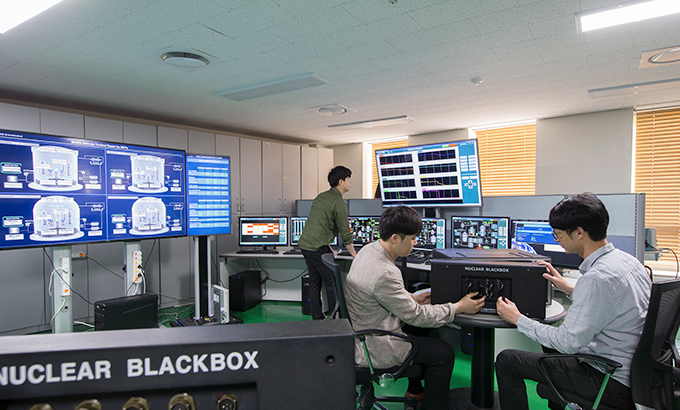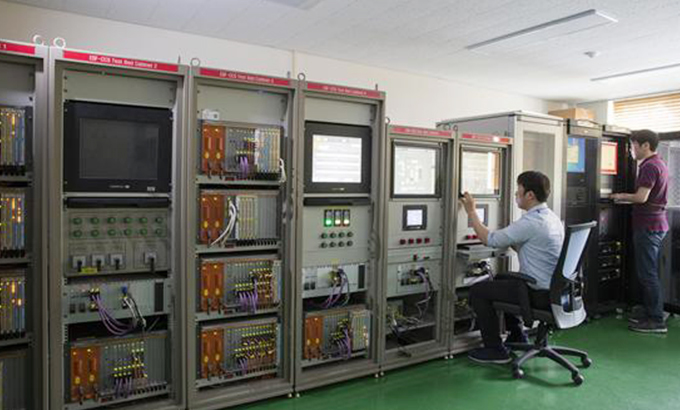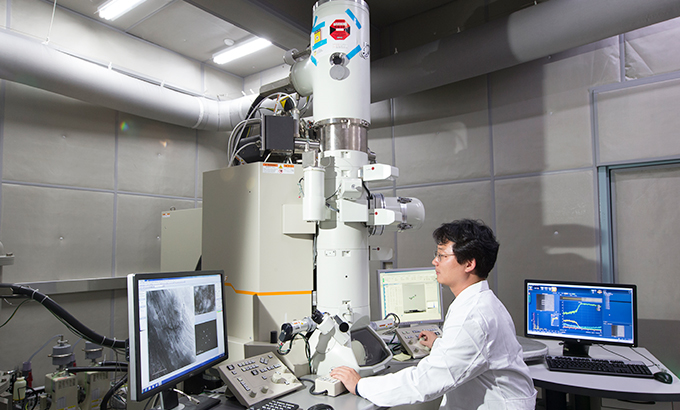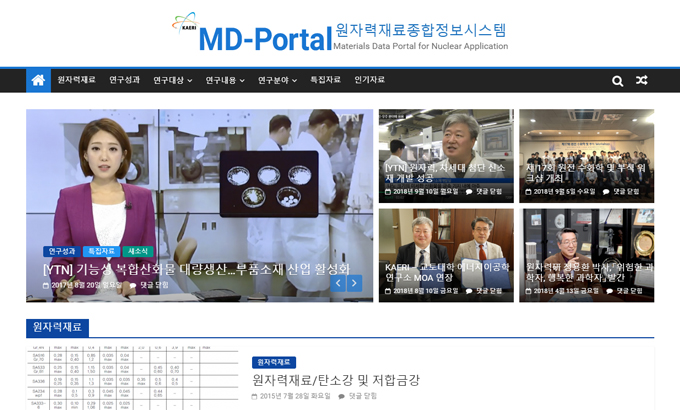Convergence with Fourth Industrial Revolution
-
- Background
- The necessity to take on challenging technology development beyond the traditional paradigm to meet expected future demands, such as flexible energy sources that respond to the changes in the energy market, and power sources suitable for harsh environments
-
- Goal
- Nuclear system technology development for flexible response to future energy demands
-
- Significance
- Meet the missions of government funded research institutes ;
- Promoting the sustainable use of nuclear energy
- Carrying out a leading role in future technology development
Promotion Strategy
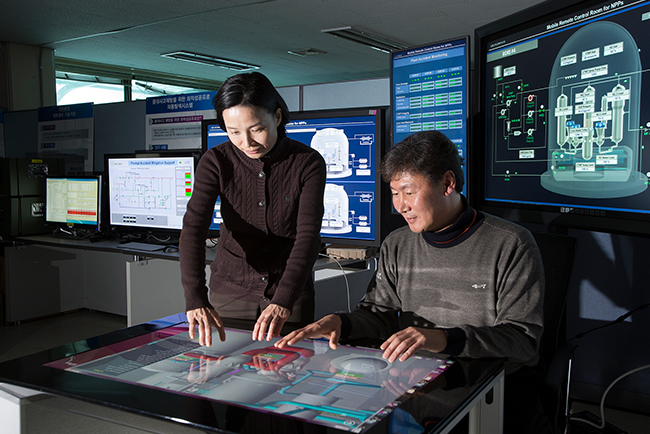
(Goal) Development of nuclear technology that can be used in the near future, where the use of new and renewable energy will expand and the fourth industrial revolution era will unfold
(Convergence with the 4th Industrial Revolution Technology) Development of technology for prevention, diagnosis, and response to nuclear accidents through the 4th Industrial Revolution Technology, such as AI, IoT, Robots, etc., development of ICT material (advanced super-conductors, energy storage materials, reliability evaluation of semiconductor devices, power semiconductor materials, etc.) and development of advanced smart electronic biosensor technology
(Preparing for energy transition policy) Development of nuclear load follow-up technology capable of linking renewable energy and development of nuclear-renewable hybrid system
(Action Plan) To carry out industry-academia-research institute collaboration research based on a short-term project of 3 to 5 years considering the rapid technological progress in the fourth industrial revolution technology
- Development of optimizing technology for efficient operation of nuclear power plants based on AI and big data
- Development of operation status monitoring technology of nuclear power plants based on AI and big data
- Development of innovative materials and components to improve safety of nuclear systems
- Development of advanced sensor materials for real-time big data collection for nuclear equipment diagnosis
- Development of technology to support autonomous start-up and shutdown operation of nuclear power plants based on AI
- Development of predictive diagnosis technology of nuclear equipment and systems based on ICT
- Development of autonomous operating reactor based on ICT
- Development of nuclear load follow-up technology
